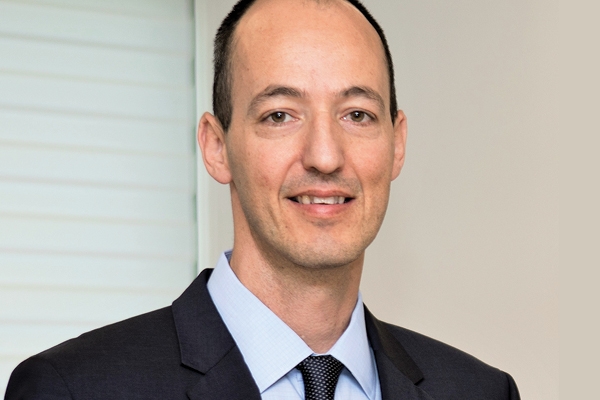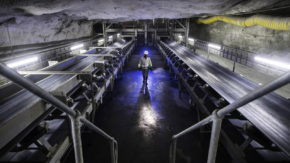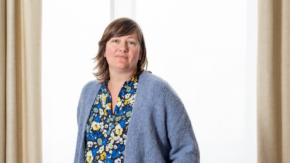David Block, CEO of Sarine Technologies, discusses the company’s new traceability initiatives, its push for more retailers to embrace e-grading, and the supply chain’s lack of efficiency.
Last month, you unveiled your co-branded diamond report with Boucheron. What does this partnership mean for the French jeweler and Sarine?
There are two main areas that this partnership deals with. The first is traceability. Boucheron is one of the leading luxury brands and part of the Kering Group, which is very oriented toward sustainability. In its new jewelry collection, Etoile de Paris, Boucheron is using our technologies to track the diamond as it passes down the pipeline. The second is the 4Cs grading, utilizing technology and artificial intelligence that enables us to grade diamonds without the need for a gemologist or grader. It’s a Boucheron report powered by Sarine. We can customize according to their brand and their requirements. We are working very closely together, whether it is with their design and marketing team, or training their sales teams globally so they can train the sales associates, [who in turn can explain our products] to the customer.
Why do you prefer letting your clients decide what information to share on their reports?
We see ourselves as an enabler. I don’t think we need to decide what information is important for the consumer. When we issue a grading report [for] traceability or the 4Cs or light performance or any other information about the diamond, we believe the retailers know their consumers much better than we do. Our job is to provide reliable, accurate and verifiable information to our partners that cannot be changed or manipulated in any way, but let them decide how to present this, what information is more important.
How do you see your company’s market potential in America?
Up until now, we had focused a lot more on the Asian and European markets — in Europe, mainly on high-end brands, and Boucheron is just the first bloom of what we have been doing over the past two years. There is no doubt the US market is a very important and critical one, as it’s the biggest retail market for diamond jewelry.
Traceability and 4Cs grading is new for us. It’s a new technology that we’ve introduced in the last two or three years. In the beginning, we decided to focus on the Asian market. There are differences between Japan, China, Thailand and Korea, but there are similarities that make it easier to start in Asia, where the adoption and use of technology is very strong. We are very digital-centric, so launching in Asia was much more natural. The decision-making process is generally easier and a lot quicker [than in the US].
Now we’ve decided to start moving ahead in the US as well and expanding our activities there. That’s why we brought Matthew Tratner on board [as general manager and vice president of Sarine North America], and we will be seeing a lot more activity in the US this year. It’s a very significant market, but it is a market that is slower to adapt. I think we’ve seen that over the years in many different areas, such as going digital…. But in the last two years, Covid-19 has really changed the mind-set a lot. And that was another reason we decided that now was the right time for the US market, because people are a lot more open to new technologies, to digital solutions. [They] understand that it’s no longer [just] a nice thing to have, it’s really a must-have, and that they will not be able to survive in today’s and tomorrow’s world without understanding and adopting a lot of different directions that have to do with technology.
Will you have a different approach toward the US market than you had toward Europe?
In Europe, it’s very important to create a level of trust with the high-end brands, because they’re not looking into this for the short term. They’re looking for long-term partners that can really connect not only with their needs for technology, but with their values as well. We have very similar values to many of our clients, and that’s why I think we can create a very sound and strong relationship in the US. There, it’s definitely more business-oriented. There’s a lot more focus on the value proposition. We’re very much focused on creating good relationships and [helping] our customers create value for themselves and for their clients.
What do you see as the biggest challenge that the industry has to overcome?
People don’t like change and are somewhat scared of change, because they’re comfortable where they are. But I think everyone now is starting to really understand that it is needed. Our industry supply chain is really inefficient, if you compare it to other industries. It’s an outdated model that really needs to change. In the last decade, there’s been growing usage of memos and a combination of online and physical in order to address issues in the supply chain. A lot of the stock has moved from the retailer to further back in the chain. Retailers today have less stock than they used to have. But I don’t think that is the right solution. Retailers need to be able to access the right stock quickly, instead of not having the stock and ending up in a situation where they take the risk of losing the clients because they go elsewhere. I think the supply chain really needs to become a lot more efficient, starting from the rough and going all the way down to the retail store. I think we’ll see very dramatic changes over the next five years in this area.
Is better use of data the solution?
Absolutely. The answer is very simple — it’s data — but [also] very complex, because data is not something simple. It’s using the data in the right way and along the entire pipeline. I believe that what will revolutionize the supply chain is more and more availability, and the use of data intelligently.
What is your biggest goal for 2022?
We’ve got a lot of ambitious goals, but if I have to choose just one of them, it’s what we call e-grading. [This is] the transition from how diamonds are graded through a grading lab to enabling a client to grade diamonds without compromising on the quality and on the independence of that grading. It means we don’t need to wait two months to get a diamond graded if we can do it from today to tomorrow — if we can do it without all the different overhead expenses, such as shipping the diamond and insuring it, and so on and so forth. That creates a much more efficient supply chain. This year is the year that we’re going to move our e-grading technology to the client and enable widespread use of that technology at the source.
But there are other areas as well for which we have a lot of things planned. We have a lot of different technologies that we are working on that are relevant for producers. Last year, we introduced the ability to do digital tenders. [This approach is in] widespread use today, whether it be by producers or tender houses, [and has] expanded dramatically over the last year because of Covid-19. Even though we started this prior to Covid-19, we believe that these things are not just a solution for the inability to travel, it is the solution even when you can travel. We saw a rapid adoption [of digital services], and we believe that can continue. In the end, it all boils down to creating valuable data, and [analyzing it through] advanced algorithms or artificial intelligence in order to create value from that data.
Image: Sarine Technologies



